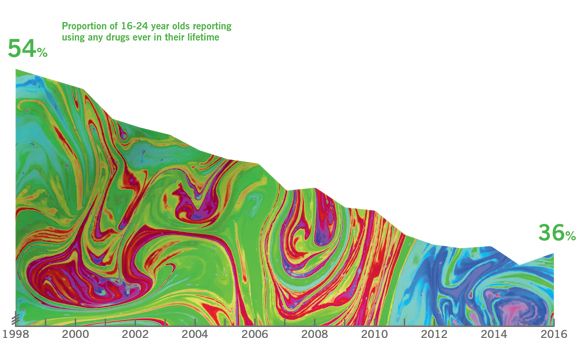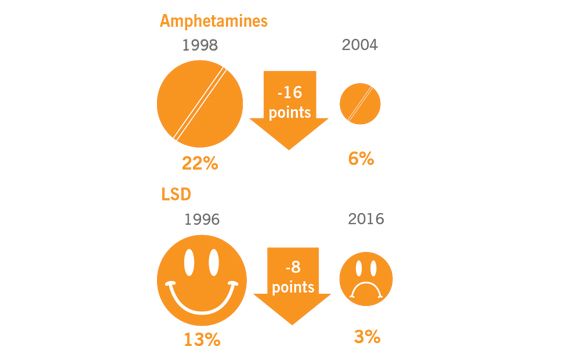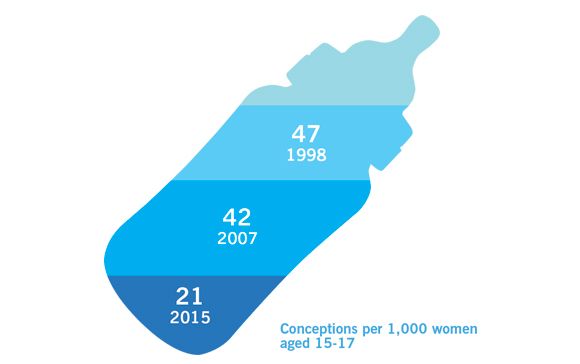On a downer
Drugs and the youngIn 1998, a clear majority of youngsters (54 per cent) said they’d taken drugs; by 2016 it was more like a third (36 per cent). The use of LSD has been fading faster than a hallucination—back in 1996, when today’s Centrist Dads were ravers, 13 per cent had dropped acid; by 2016 it was 3 per cent. “Despair” drugs like heroin have also declined (from 1.6 per cent in 2000 to 0.1 per cent), and despite the media panic, “legal high” use is now falling too, from 6.1 per cent in 2014 to 4.2 per cent last year. The only drug to defy the trend is cocaine, which has held steady at about 10 per cent since 2000.

Stubbing it out
Fags and booze have gone out of styleIn 1999, 54 per cent of secondary school kids thought it was OK to try smoking. By 2014, only 26 per cent did. The trend in drinking is also clear—in 2005, 29 per cent of 16-24-year-olds reported they had drunk excessively at some point during the previous week. In 2014, the number was 20 per cent. A Times Higher Education survey last year found fully 36 per cent of students were teetotal, up from 26 per cent in 2012.


Falling pregnant
Teenage mothers are becoming a thing of the pastIn 1998 there were 47.1 conceptions per 1,000 women aged 15 to 17. By 2015, the number was down to 21. Note these are conceptions, not live births, so it’s a sign of young women controlling their fertility through contraception or abstinence, and not simply recourse to abortion.













